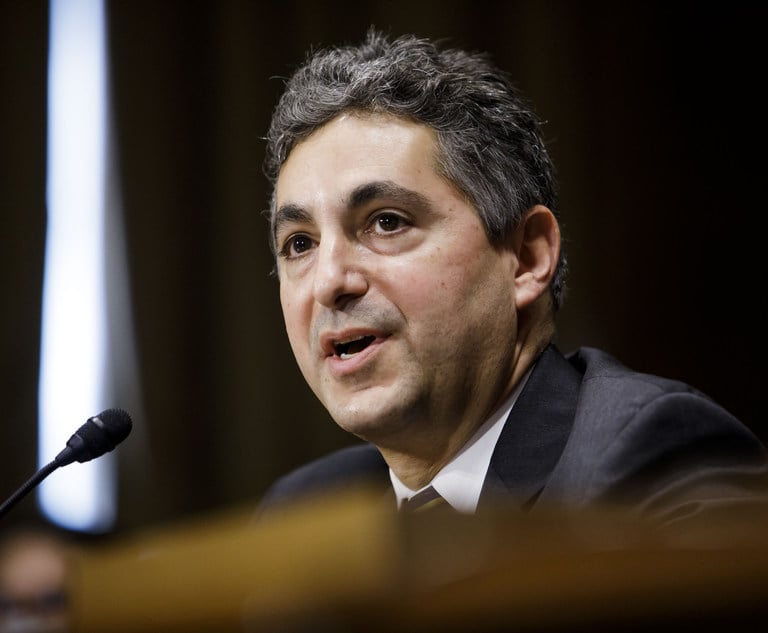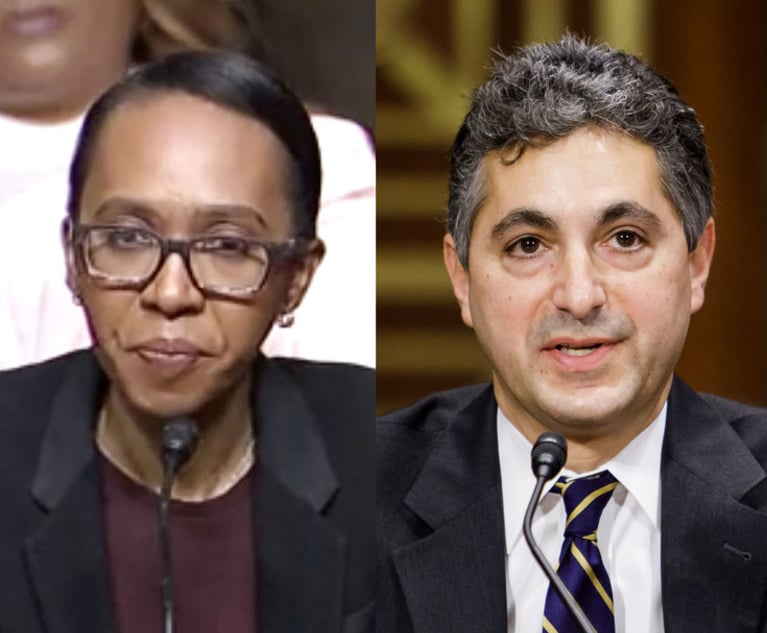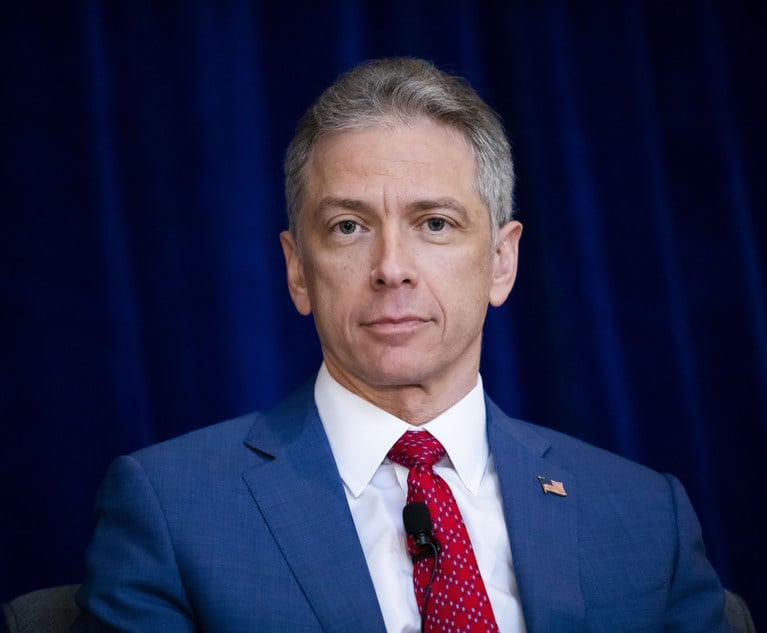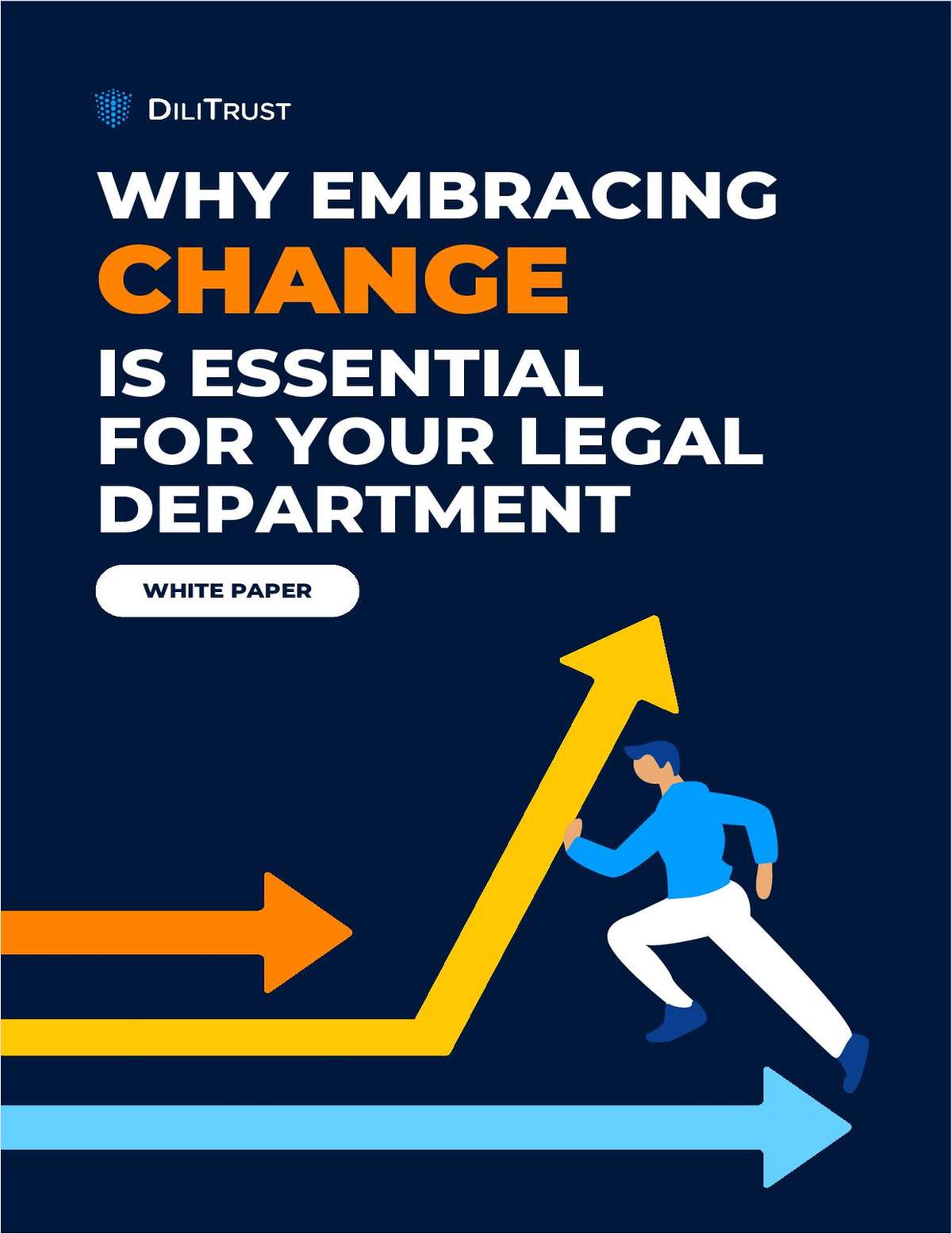Skilled in the Art: A Farewell to Judge Jeremy Fogel
Also, the wide applicability of WesternGeco, and bye bye BRI, hello Phillips.
October 12, 2018 at 03:22 PM
7 minute read
|
Farewell to Judge Fogel
Today's dispatch starts with a pop quiz: Which judge has appeared in the most U.S. courtrooms in the country? A good bet would be Jeremy Fogel, who narrates a Federal Judicial Center video that introduces jurors to patent cases.
I've borrowed this quiz question from former U.S. Magistrate Judge Paul Grewal, who popped it Thursday at a Stanford Law School/Federal Bar Associationsymposium honoring Fogel's career and unveiling his official portrait. Whether its with litigators in Wilmington, Delaware or Marshall, Texas, Grewal said that whenever he mentions his former colleague, “They'll say, 'Oh yeah, the video guy!'”
Fogel retired last month after spending 37 years on the bench, including the last seven as director of the Federal Judicial Center. His contributions to the judiciary and to intellectual property extend far beyond the video, of course.
That point was driven home Thursday when retired U.S. District Judge Ronald Whyte, the patent law pioneer, recalled litigating a business dispute in Fogel's state law courtroom some 30 years ago, before Whyte had ever taken the bench. (Whyte said Fogel ruled in his favor, so they got off to a good start).
On the federal bench, one of Fogel's best known cases was Lenz v. Universal Music,a.k.a. the Dancing Baby case. A YouTube poster sued after the 30-second video of her toddler dancing to Prince's Let's Go Crazy was removed from the internet. Fogel ruled that the Digital Millennium Copyright Act implicitly requires copyright holders to consider fair use before issuing takedown notices. The Ninth Circuit affirmed him.
Grewal, who now works at Facebook, described Lenz as a seminal ruling that touches “nearly every aspect of our digital life.”
Whyte was equally enthused, though not as much for the video itself. “It's very disappointing,” he said.
Weil Gotshal & Manges partner Ed Reines, who helped Grewal organize the event, noted that Fogel sat as a visiting judge frequently at the Federal Circuit. “He handled patent cases with great ease,” Reines said. “He would have been an excellent CAFC judge and was seriously considered for that court.”
Many of Thursday's tributes touched on Fogel's work in judicial education, especially his focus on emotional intelligence. He'll be continuing that work as director of the new Berkeley Judicial Institute at UC-Berkeley School of Law.
Berkeley Law professor Peter Menell, who teaches judges about intellectual property, will collaborate with Fogel as the institute's faculty adviser.
Portrait of Judge Jeremy Fogel by Scott Johnston.
|
Stark: Yes, WesternGeco Applies Broadly
You'll all remember that in last June's WesternGeco decision, the Supreme Court loosened the rule against extraterritorial application of patent damages. But a big question was left hanging: Does the new rule apply only to damages for overseas induced infringement under Section 271(f)(2) — the specific issue presented in WesternGeco — or does it apply more broadly, including to damages for direct infringement under Section 271(a)?
One district judge has supplied an answer. And not just any district judge, but the chief judge of the busiest district for patent suits: Leonard Stark of Delaware.
Stark is presiding over part of the long-running patent litigation between Power Integrations and Fairchild Semiconductor. Power Integrations was awarded $34 million in worldwide damages for induced infringement in a 2006 trial, which Stark later reduced to $6 million for U.S. damages only.
The Federal Circuit ruled that Stark was right to limit the damages to U.S. sales but found no evidence of induced infringement, ordering a new trial on direct infringement only. Then the Supreme Court issued WesternGeco, teeing up the worldwide damages issue again.
Stark wrote in an Oct. 4 order that in his view, WesternGeco implicitly overruled both him and the Federal Circuit. “The Supreme Court's analysis of the patent damages statute, Section 284, has equal applicability to the direct infringement allegations pending here, as governed by Section 271(a), as it did to the supplying a component infringement claims at issue in WesternGeco II, which were governed by Section 271(f)(2),” he wrote.
Stark certified his order for interlocutory appeal, and neither party objected. Ropes & Gray counsel Matt Rizzolo, who's not involved in the case, said he expects the Federal Circuit to take it up. “Given the uncertainty, they may want to seize on it and provide clarity,” he said, similar to how the court proceeded following the Supreme Court's TC Heartland decision on patent venue.
University of Denver law professor Bernard Chao, who's criticized the worldwide damages model, said he thinks Stark is correctly applying the law as handed down in WesternGeco. But, he said, “Keep in mind this just means that plaintiffs can ask for worldwide damages. It doesn't mean they automatically get them.”
The Supreme Court didn't address proximate cause in its ruling, but Chao said it may be difficult for patentees to prove that using an infringing technology in the United States caused lost foreign sales. “That may be too tenuous even if foreseeable,” he said.
|
Out With BRI, in With Phillips
It seems like ages ago in the IP news cycle, but just last Wednesday the USPTO issued its final rule officially changing the claim construction standard in America Invents Act proceedings. The agency replaced the broadest reasonable interpretation standard with the Phillips standard used by district courts and the International Trade Commission.
The immediate takeaway I'm hearing from PTAB practitioners is that, even though the standards don't often lead to different results in practice, the change will still have a big impact on strategy.
“In the past, petitioners frequently latched on to the different claim construction standards to justify proposing different constructions in district court and the PTAB,” Paul Hastings partner Naveen Modi said. “Going forward, that will be much harder to do. But the rule change may also increase predictability, which is something that petitioners and patent owners alike have pushed for.”
Fitzpatrick, Cella, Harper & Scinto partner Justin Oliver had a similar take. “With the PTAB's adoption of the same standard applied by district courts, the claim construction record in one forum will likely have a more significant impact in the other,” he said.
Those raised stakes “might make it a tougher decision” to file an IPR petition, White & Case partner Bijal Vakil said.
The new rule takes effect Nov. 13. The PTO had originally proposed making the change retroactive but, following a deluge of public comments, decided to apply it only to new petitions filed after that date. “Those comments seem to have had a real impact on the USPTO's ultimate decision not to apply the rule retroactively,” Paul Hastings partner Joseph Palys said.
That's all from Skilled in the Art this week. I'll see you all again on Tuesday.
This content has been archived. It is available through our partners, LexisNexis® and Bloomberg Law.
To view this content, please continue to their sites.
Not a Lexis Subscriber?
Subscribe Now
Not a Bloomberg Law Subscriber?
Subscribe Now
NOT FOR REPRINT
© 2024 ALM Global, LLC, All Rights Reserved. Request academic re-use from www.copyright.com. All other uses, submit a request to [email protected]. For more information visit Asset & Logo Licensing.
You Might Like
View All
Skilled in the Art With Scott Graham: I'm So Glad We Had This Time Together

Design Patent Appeal Splinters Federal Circuit Panel + Susman Scores $163M Jury Verdict + Finnegan Protects Under Armour's House
Trending Stories
Who Got The Work
Michael G. Bongiorno, Andrew Scott Dulberg and Elizabeth E. Driscoll from Wilmer Cutler Pickering Hale and Dorr have stepped in to represent Symbotic Inc., an A.I.-enabled technology platform that focuses on increasing supply chain efficiency, and other defendants in a pending shareholder derivative lawsuit. The case, filed Oct. 2 in Massachusetts District Court by the Brown Law Firm on behalf of Stephen Austen, accuses certain officers and directors of misleading investors in regard to Symbotic's potential for margin growth by failing to disclose that the company was not equipped to timely deploy its systems or manage expenses through project delays. The case, assigned to U.S. District Judge Nathaniel M. Gorton, is 1:24-cv-12522, Austen v. Cohen et al.
Who Got The Work
Edmund Polubinski and Marie Killmond of Davis Polk & Wardwell have entered appearances for data platform software development company MongoDB and other defendants in a pending shareholder derivative lawsuit. The action, filed Oct. 7 in New York Southern District Court by the Brown Law Firm, accuses the company's directors and/or officers of falsely expressing confidence in the company’s restructuring of its sales incentive plan and downplaying the severity of decreases in its upfront commitments. The case is 1:24-cv-07594, Roy v. Ittycheria et al.
Who Got The Work
Amy O. Bruchs and Kurt F. Ellison of Michael Best & Friedrich have entered appearances for Epic Systems Corp. in a pending employment discrimination lawsuit. The suit was filed Sept. 7 in Wisconsin Western District Court by Levine Eisberner LLC and Siri & Glimstad on behalf of a project manager who claims that he was wrongfully terminated after applying for a religious exemption to the defendant's COVID-19 vaccine mandate. The case, assigned to U.S. Magistrate Judge Anita Marie Boor, is 3:24-cv-00630, Secker, Nathan v. Epic Systems Corporation.
Who Got The Work
David X. Sullivan, Thomas J. Finn and Gregory A. Hall from McCarter & English have entered appearances for Sunrun Installation Services in a pending civil rights lawsuit. The complaint was filed Sept. 4 in Connecticut District Court by attorney Robert M. Berke on behalf of former employee George Edward Steins, who was arrested and charged with employing an unregistered home improvement salesperson. The complaint alleges that had Sunrun informed the Connecticut Department of Consumer Protection that the plaintiff's employment had ended in 2017 and that he no longer held Sunrun's home improvement contractor license, he would not have been hit with charges, which were dismissed in May 2024. The case, assigned to U.S. District Judge Jeffrey A. Meyer, is 3:24-cv-01423, Steins v. Sunrun, Inc. et al.
Who Got The Work
Greenberg Traurig shareholder Joshua L. Raskin has entered an appearance for boohoo.com UK Ltd. in a pending patent infringement lawsuit. The suit, filed Sept. 3 in Texas Eastern District Court by Rozier Hardt McDonough on behalf of Alto Dynamics, asserts five patents related to an online shopping platform. The case, assigned to U.S. District Judge Rodney Gilstrap, is 2:24-cv-00719, Alto Dynamics, LLC v. boohoo.com UK Limited.
Featured Firms
Law Offices of Gary Martin Hays & Associates, P.C.
(470) 294-1674
Law Offices of Mark E. Salomone
(857) 444-6468
Smith & Hassler
(713) 739-1250











